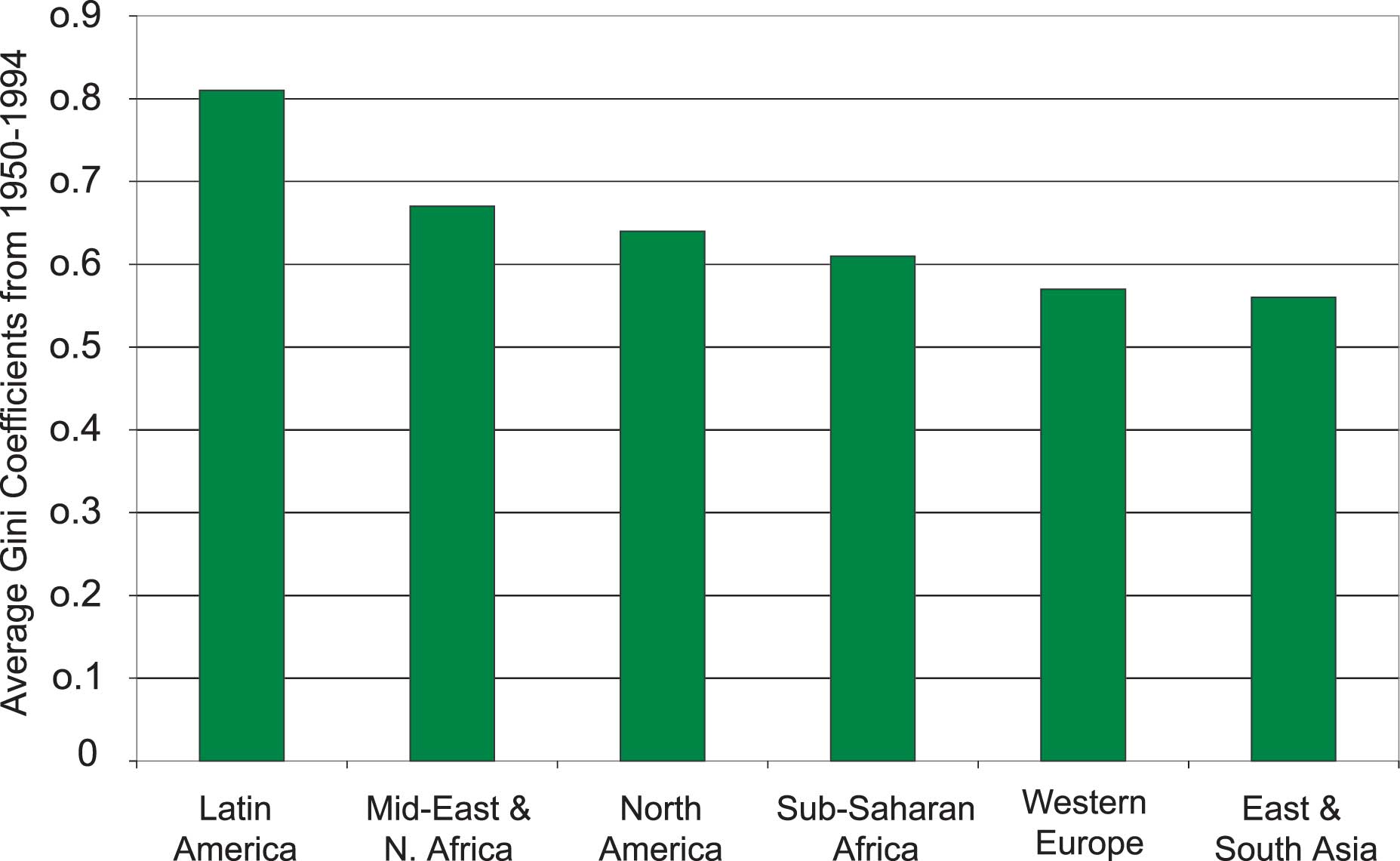The poor in rural areas, compared to those who are not poor, generally have worse health, since the families are more numerous and more dependent and access to health services is more limited. The availability of information on the delivery of health services and other services is very scarce. Nonetheless, from 2000 to 2005 infant mortality— one key indicator of health—was 35.4 per 1,000 live births in LAC; for males it was 38.8 per 1,000 live births and for females 31.8 per 1,000 live births. In addition, for most of the countries, those rates are considerably greater in rural than in urban areas (CEPAL, 2006ab). Infant mortality has declined gradually since 1990 in most of the countries, although it is still alarming in Haiti, at 54.1 per 1,000 live births; and Bolivia has the highest infant mortality in South America, at 45.6 per 1,000 live births.
CEPAL (2004) reports that chronic malnutrition in the region affects 15% of children under five years. In most of the countries of the region, children in rural areas, where food is produced, have the highest levels of malnutrition (Dirven, 2004). In addition, an inverse relationship has been noted between malnutrition and agricultural output. Countries with malnutrition of 0 to 10% have 400% greater per capita food production than countries with malnutrition of 10 to 20% and 320% greater per capita food production than countries with malnutrition of 20 to 65%.
Another factor behind social deterioration in the region is the lack of employment and its low quality (Dirven, 2004). The degradation of working conditions in the countryside in LAC is reflected in the low incomes of rural families and, therefore, in a persistent increase of migration from rural areas to the cities, creating mega-cities with areas of extreme poverty and greater demand, in many cases impossible to meet, for services in the main cities of LAC (Davis, 2005). The structural adjustment programs promoted and imposed by the International Monetary Fund, combined with economic liberalization, have provoked a massive exodus from the countryside to the cities (Bryceson et al., 2000). In addition, there is migration to industrialized countries, either in the region, or to Europe or the United States. Examples of this phenomenon include Mexico, Ecuador, El Salvador, Peru and Nicaragua; remittances become a very important source of income for rural and urban poor families in these countries (Comunidad Andina, 2006) (see 1.5.3).
1.5.2.2 Inequality in land tenure
Latin America and the Caribbean represent the most extensive reserve of arable land in proportion to population. The region has 576 million ha (UNEP, 2002b), equivalent to 30% of the arable land in the world and 28.5% of the total land in the region. Nonetheless, the region has the greatest inequality in land distribution in the world (Figure 1-4; Ferranti et al., 2004). Historically, the land tenure systems in LAC were based on private property, the concentration of agricultural lands in the hands of a few families and the existence of a large number of peasant families or landless workers, in what was called the latifundia-minifundia complex and the plantation economy (Lastarria-Cornhiel and Melmed-Sanjal, 1998). The latifundistas had vast expanses of land and those best suited for agriculture, while the small farms, or minifundia, survived in the marginal areas.

Figure 1-4. Distribution of operational holdings of agricultural land worldwide. Source: Author’s elaboration using data from Deininger and Olinto, 2000
The agrarian reforms of the 1950s, 1960s and 1970s attempted to modify this situation of inequity by expropriating and purchasing large properties and redistributing them to peasants with little or no land, in general in the context of political and social mobilizations. Nonetheless, from an economic perspective, the agrarian reforms of this period did not succeed in reducing the levels of poverty of the rural population (Groppo, 1997). The reforms were limited in terms of the redistribution of land and allocation of land was not accompanied by supplemental measures (such as technical assistance, loans and market access) that might enable the small-scale producers to emerge from poverty.
Several decades later, the effects of the agrarian reforms on relations of production in agriculture, the development of a modern capitalist economy and the problems of poverty and equity continue to be part of the debate (Van Dam, 1999). In several countries large haciendas have given rise to commercial agriculture or agroindustry that controls the lion’s share of the productive process, for both the domestic market and increasingly geared to external markets. At present, the modernization of Latin American agriculture has dramatic effects in terms of tenure, since there is a high concentration of property and agricultural production, whose main effects have been to displace small producers and peasants, leading to impoverishment, migration and social exclusion (Van Dam, 1999).
Nowadays, the forms of land tenure in the region are
highly varied and complex. Nonetheless, within this heterogeneous
reality, the bipolarity persists in which the latifundium
has been replaced by the capitalist enterprise that
gears its production almost exclusively to the export market,
which no longer maintains economic relations with the
minifundista peasants, who produce for their own subsistence
and for the local and regional markets. At the same
time, the impoverished small landowners are exposed to
the constant threat of being forced to sell their land and
other assets to buy foods. For the landless, access to land is
generally difficult, insufficient and insecure. The systems of